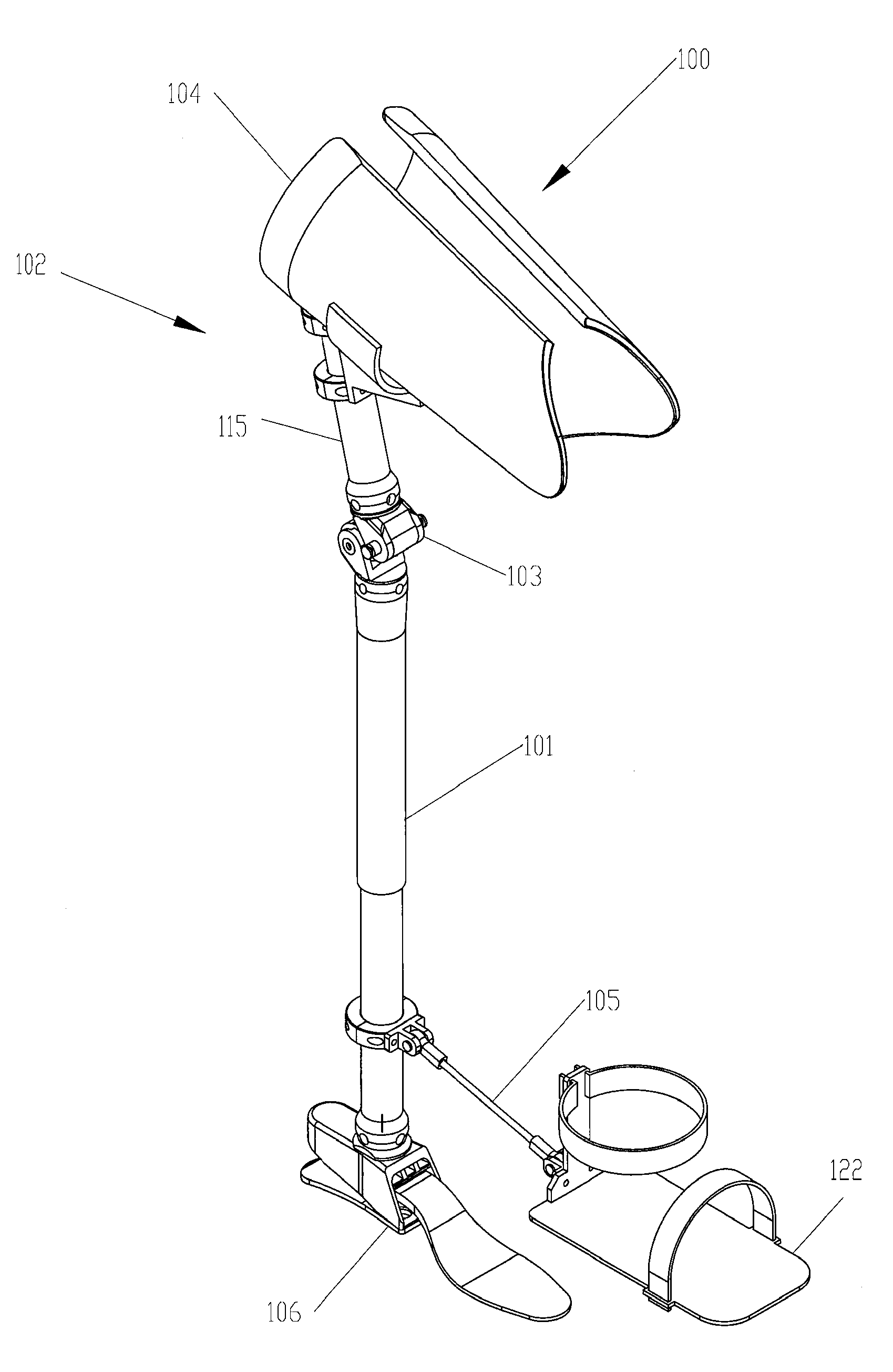External walking assist device for those with lower leg injuries
a technology for lower legs and assist devices, applied in walking aids, physical therapy, medical science, etc., can solve the problems of limited use of hands for other purposes, difficulty in walking, standing up, sitting down, and using crutches to walk, so as to reduce the ground reaction force entering the foo
- Summary
- Abstract
- Description
- Claims
- Application Information
AI Technical Summary
Benefits of technology
Problems solved by technology
Method used
Image
Examples
Embodiment Construction
[0030]In accordance with one exemplary embodiment, FIG. 1 is a drawing illustrating a walking assist device 100 having a shank link 101 and a thigh member 102 rotatably connected to each other at a knee mechanism 103. Thigh member 102 is configurable to be in contact with the person's thigh 109. In operation, when walking assist device 100 is in contact with the ground through its shank link 101 (i.e., stance phase), knee mechanism 103 is resisting the motion (i.e., rotation) of shank link 101 relative to thigh member 102, thereby preventing the person's foot 110 from contacting the ground and reducing the ground reaction force entering the person's foot 110.
[0031]In some embodiments, as shown in FIG. 1, walking assist device 100 operates such that when shank link 101 is not in contact with the ground (i.e., swing phase), the resistance of knee mechanism 103 to the motion (i.e., rotation) of shank link 101 relative to thigh member 102 is less than the resistance of knee mechanism 10...
PUM
 Login to View More
Login to View More Abstract
Description
Claims
Application Information
 Login to View More
Login to View More - R&D
- Intellectual Property
- Life Sciences
- Materials
- Tech Scout
- Unparalleled Data Quality
- Higher Quality Content
- 60% Fewer Hallucinations
Browse by: Latest US Patents, China's latest patents, Technical Efficacy Thesaurus, Application Domain, Technology Topic, Popular Technical Reports.
© 2025 PatSnap. All rights reserved.Legal|Privacy policy|Modern Slavery Act Transparency Statement|Sitemap|About US| Contact US: help@patsnap.com



